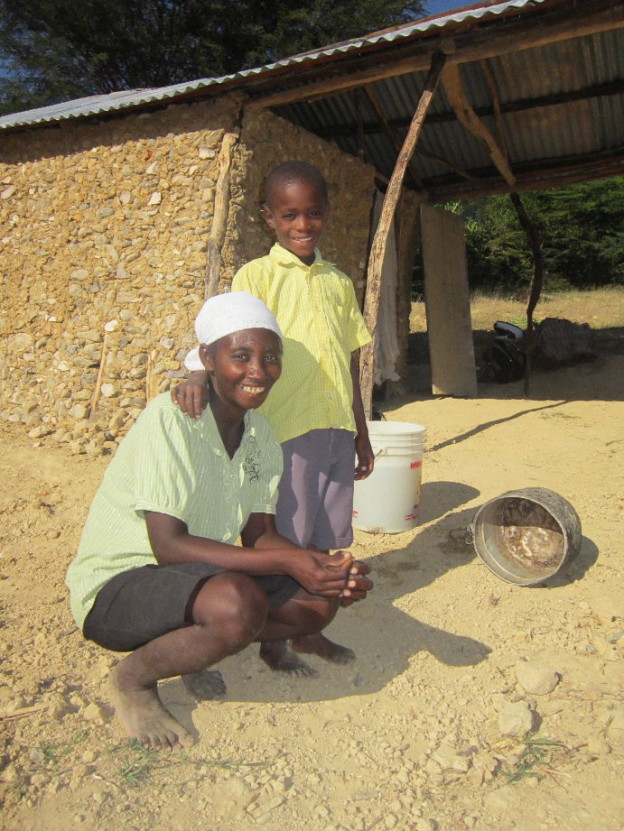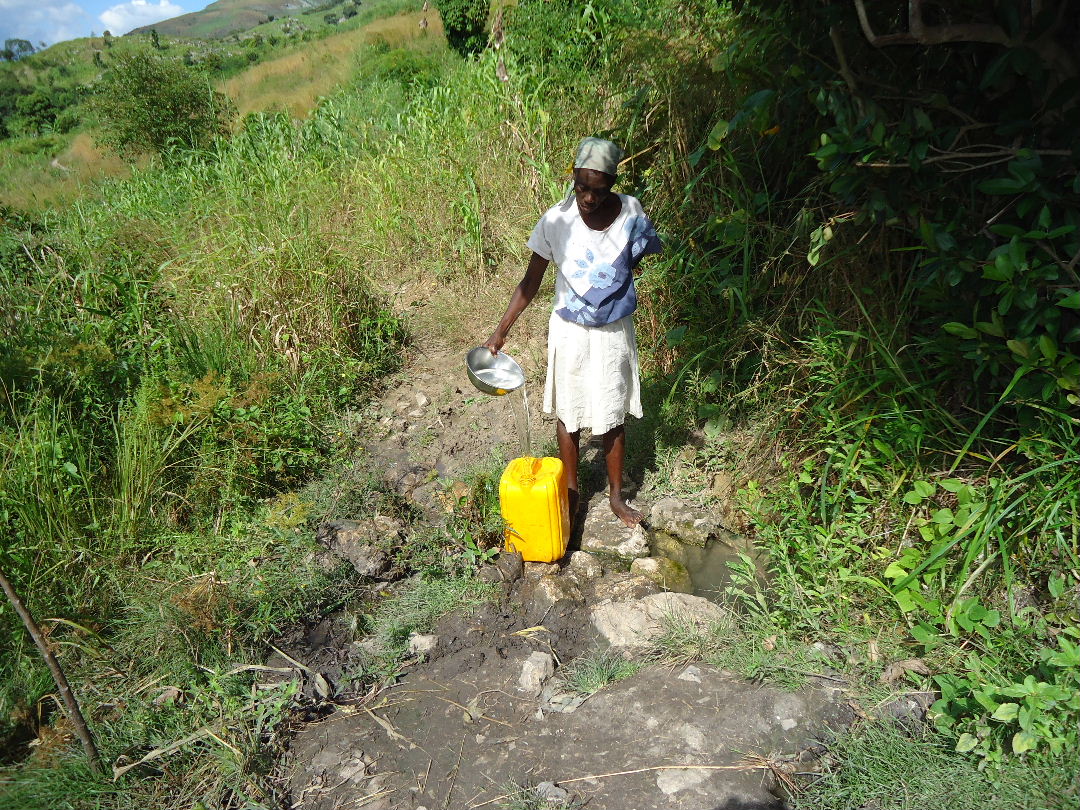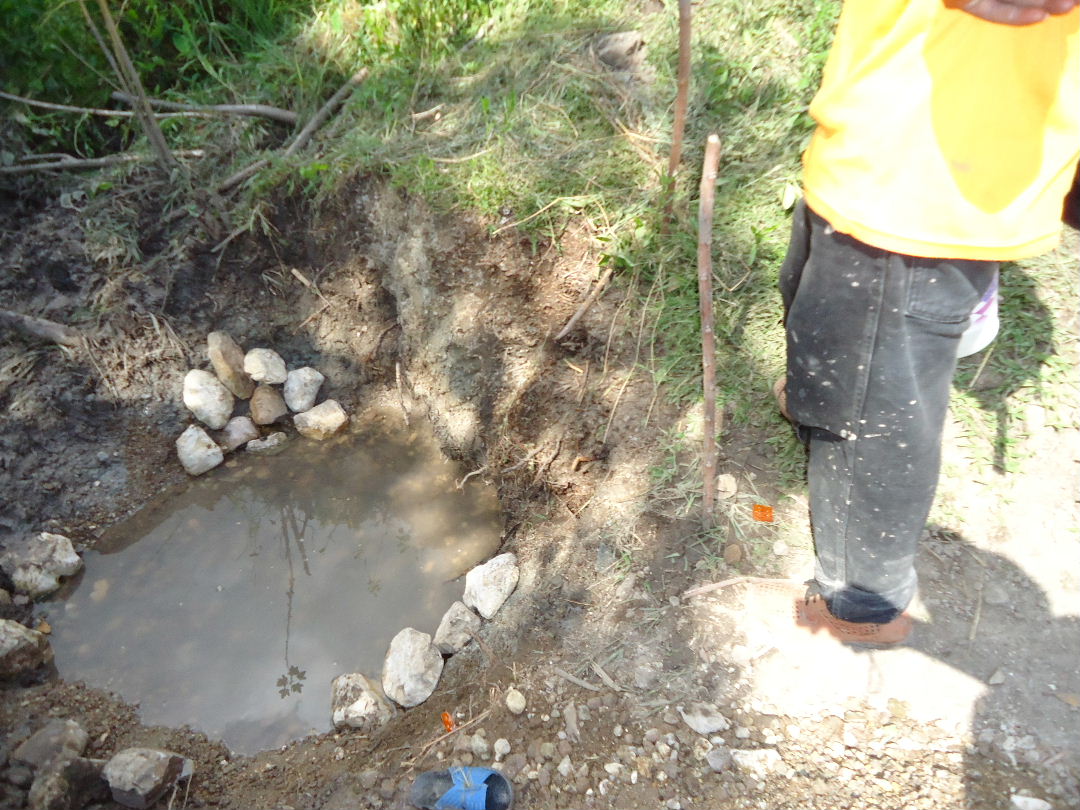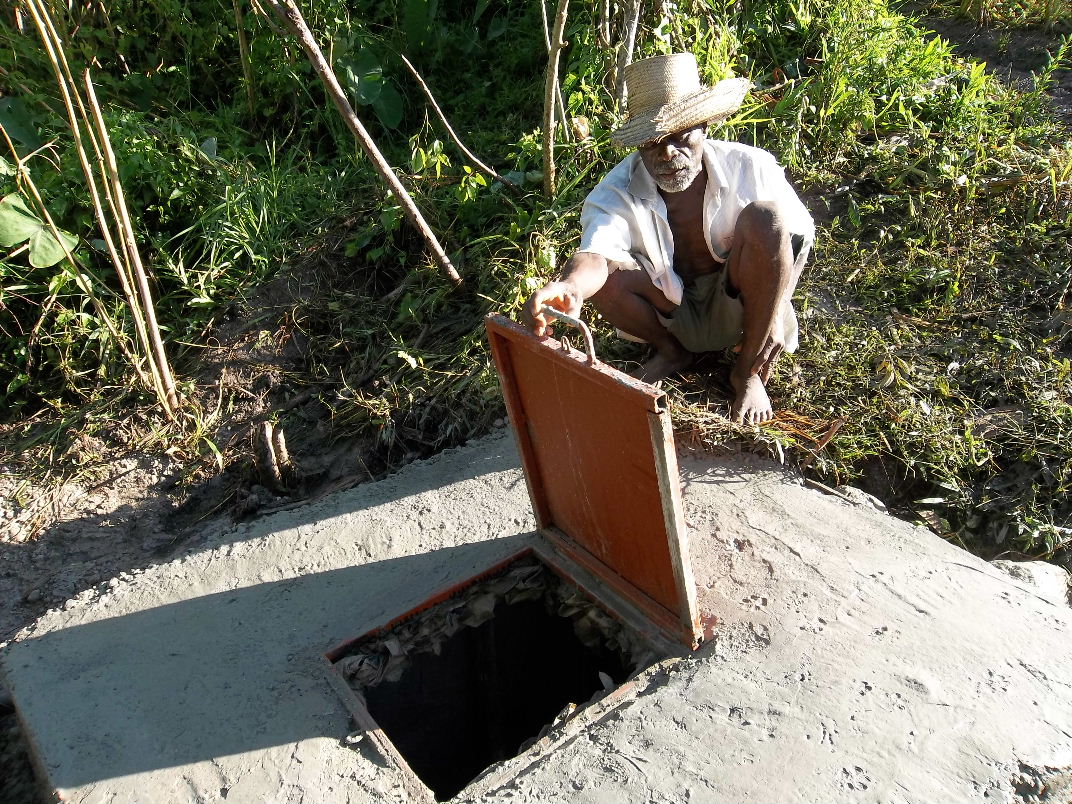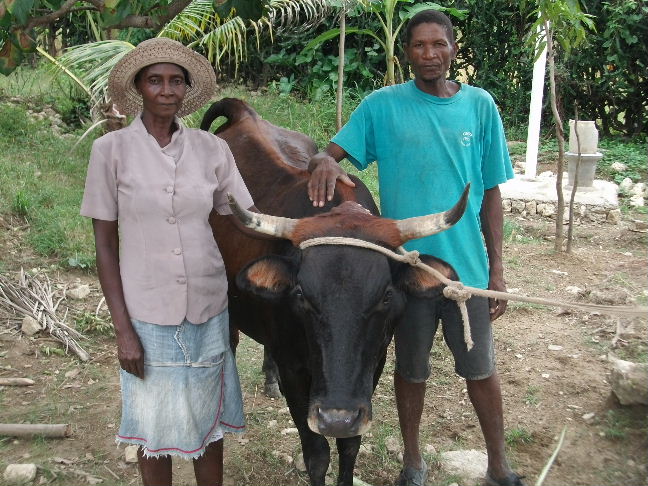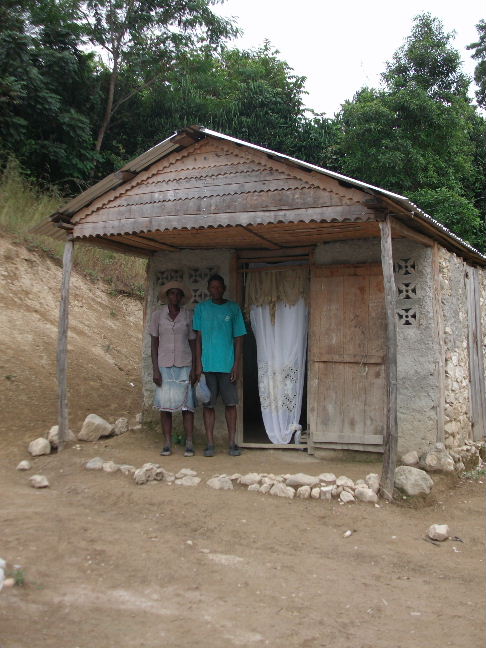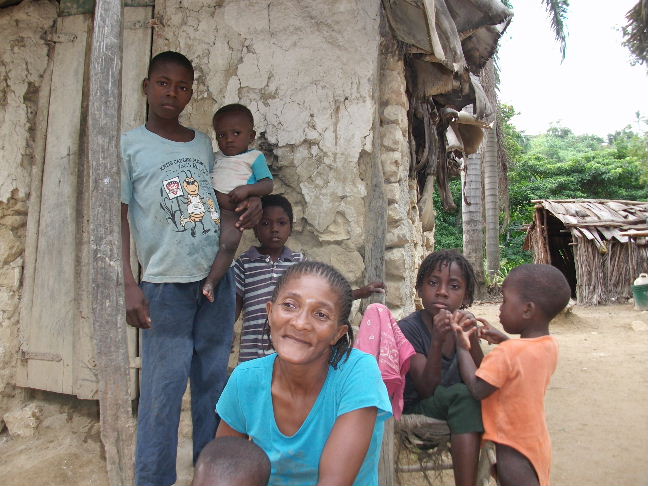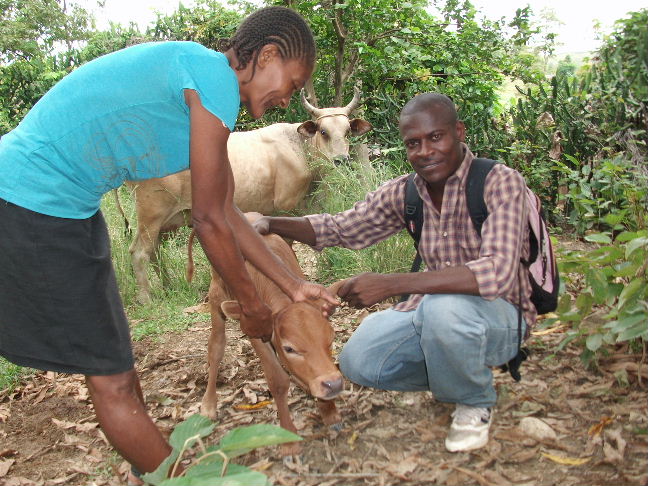Verona’s house is a little different from most of the other homes in Marekaj. Marekaj is a village that sits across a valley from Opyèg, the market just on the Tomonn side of the border with Boukankare. It’s an area pleasantly divided between farmland and trees. Most of the houses are clustered in little groups of five or six, which Haitians call “lakou.” Generally, a lakou will be home to a single extended — or not so extended — family. Haitian houses, especially in the countryside, tend to be small, but even a family with a relatively large house will spend little time indoors. Life in rural Haiti passes in the lakou, not in the house.
What sets Verona’s house apart in Marekaj is that it’s set apart. It stands by itself, on the top of a hill, a good ten-minute uphill walk from her nearest neighbor. It’s surrounded by a coffee grove. Not, unfortunately, a productive one. She lives with a few of her sons — two of them grown — and a couple of grandchildren.
She’s been doing fairly well in our program. Her youngest two boys appear to be taking good care of her now-pregnant goats. She’s been buying poultry with what she can save from her weekly food stipend, and she took money from her savings club and started a small commerce. She buys coffee beans in the market across Bay Tourib, in Regalis, and sells them in Opyèg or down in lower Boukankare.
Chemen Lavi Miyò is fundamentally an education program. It includes giving our members assets, which they need to establish regular income and protect their health, but it has very little in common with simple giving. Our goal is to help extremely poor families fundamentally improve the way they live, and these improvements depend in part on their learning new habits, so the heart of the program is the education that it offers.
CLM education has several different aspects. It includes basic training in management of income-generating assets: six days at the start of the program and four-day review sessions every three months after that. More importantly, it includes weekly one-on-one coaching with a case manager for the full eighteen months.
During those coaching sessions, members receive advice about caring for their livestock and managing their businesses, they talk with their case managers about their own and their children’s health, and they are pushed to plan, to make decisions that reach deeper than just where to find their next meal. Much about these coaching sessions is almost as unpredictable as any dialogue could be. We know that there are certain topics that must come up for discussion, but it’s hard to foresee just what will be said.
One part of each weekly visit, however, is tightly scripted. We call it the “issue.” Every week, members and case managers go through one out of a rotating list of ten health-related subjects. Going over the week’s issue involves dialogue. We try to draw from the members what they already know about the issue, and since the issues are repeated every ten weeks, members have more and more to say as the time goes on. But the dialogue is not open-ended. We don’t leave it to our members to decide whether vitamin A is good, whether prenatal care is important, or whether they should keep their homes and their children clean.
When presented properly, the issues have a three-part structure. First, we ask a member to consider a danger that hangs over her family and herself. We want her to feel threatened. We then go over the measures the member can take to protect herself and her family from the threat. Finally, we push the member to commit herself to making the changes she needs to make.
Last week’s subject can serve as an example. The issue was, “Too Early Pregnancy is not Good.” We start the issue by going over the dangers inherent to mother and child when the mother is too young. We describe how childbirth can tear apart an undeveloped body, how very young mothers can suffer or even die, and how their children are likewise at risk. We also describe how rarely very young mothers are socially or economically prepared to take care of their kids, and how rarely they can expect the baby’s father to help them out. Then we suggest to them that girls should refrain, if they can, from sexual activity until they’re at least eighteen, and that they should probably not have kids until they’re 25 or settled enough to be capable of taking care of them. Finally, we ask them to say how they can integrate the lesson into their lives, and to commit themselves to doing so.
In the case of too early pregnancy, that last step might be hard to imagine. After all, everyone selected for membership in the CLM program is already a mother. Many of them are already grandmothers. Verona, for example. Talk about too-early pregnancy might seem as though it comes too late to do any good.
But Verona responded to the issue with enthusiasm, and we quickly learned why. When I asked her how old she had been when she had her first child, she said she had been thirteen. She explained that she had become pregnant after an older man raped her. The baby died during labor. Verona explained that her body had just been too small to give birth. She had been badly wounded herself, and took over a year to recover. As she said, only her mother’s care brought her back.
So the commitment Verona made was to talk to the girls she knows about her experience, to help them see the importance of patience. And she wasn’t the only one. The previous day, I had spoken with another grandmother, Elimène. She lives with children and grandchildren in Fonpyèjak, just uphill from our base in Bay Tourib. The lesson brought her oldest daughter, Sensilyèn, to her mind. At 25, Sensilyèn already has eight children. She simply started too young. Elimène can see the price the whole family pays. Like Verona, Elimène told her case manager that she would talk to the girls around her, her younger daughters and her granddaughters especially, about how important it is for them to take care.
And it is not merely a matter of giving our members advice that they can share. I think there is something deeper involved. Our members start with a strong tendency to take their poverty for granted. They think of it as something that has happened to them. It’s a destiny for some; for others, an accident. They look at it as something outside of their control.
One critical part of the transformation that CLM members need to undergo is for them to understand that poverty has some causes that they can act upon. Members need to learn that their decisions matter. Everything we can do to help them learn that the decisions they make can dramatically affect their lives is a step on the road from victim towards actor. And walking that road is a key part of the pathway to a better life.
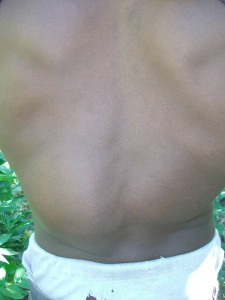
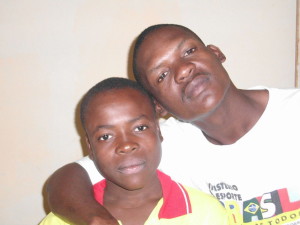
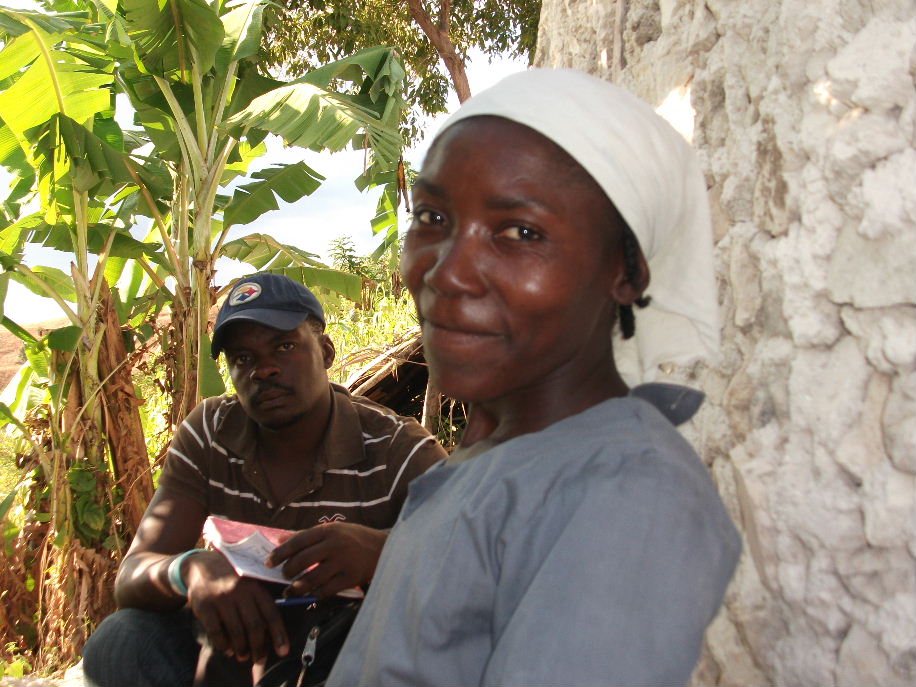
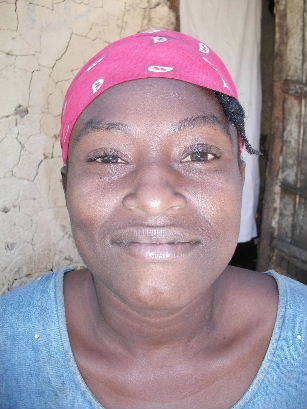
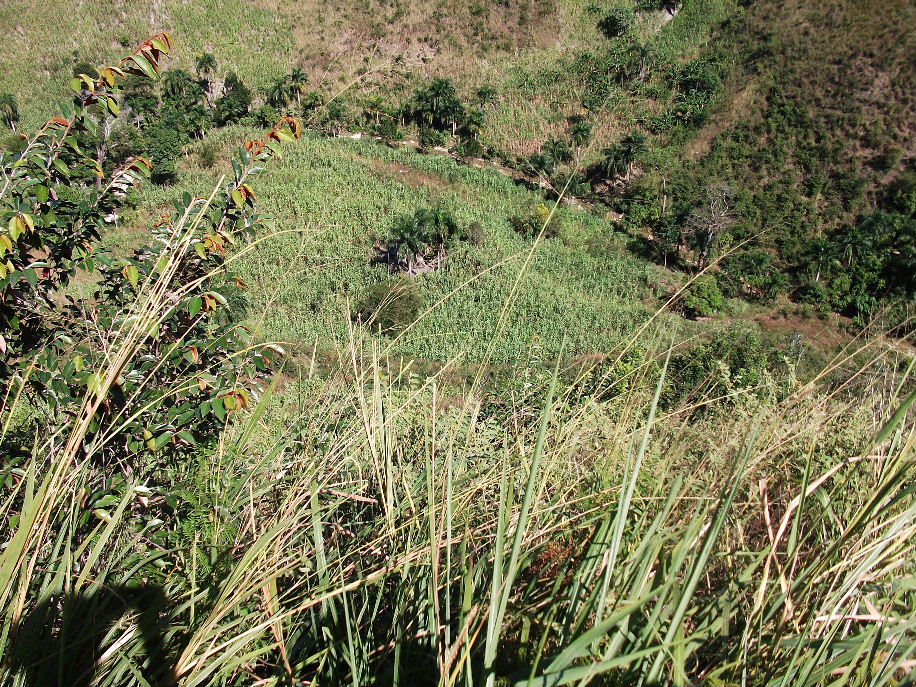
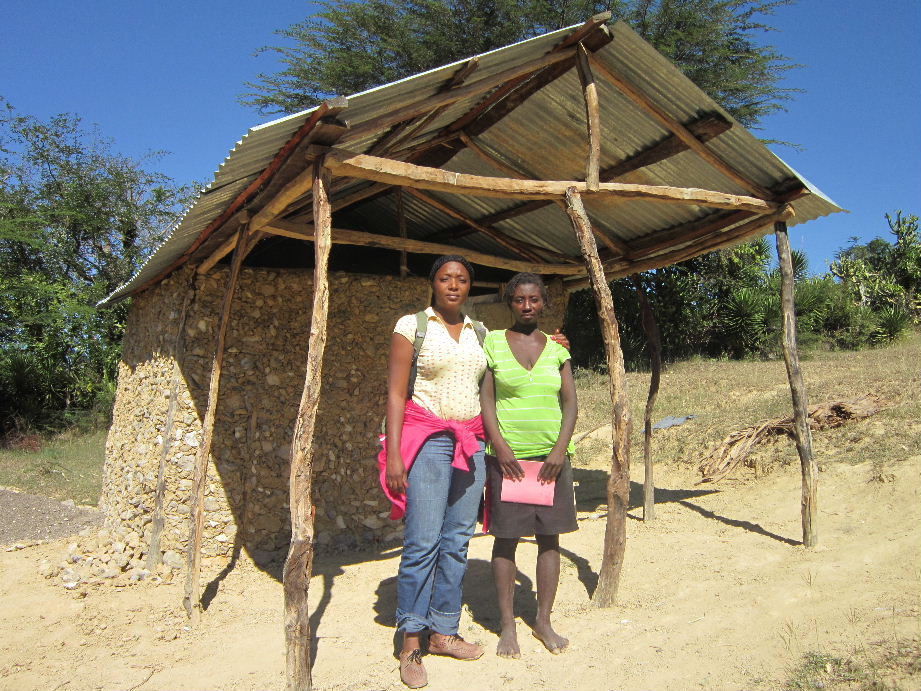 With her CLM Case Manager, Alancia
With her CLM Case Manager, Alancia